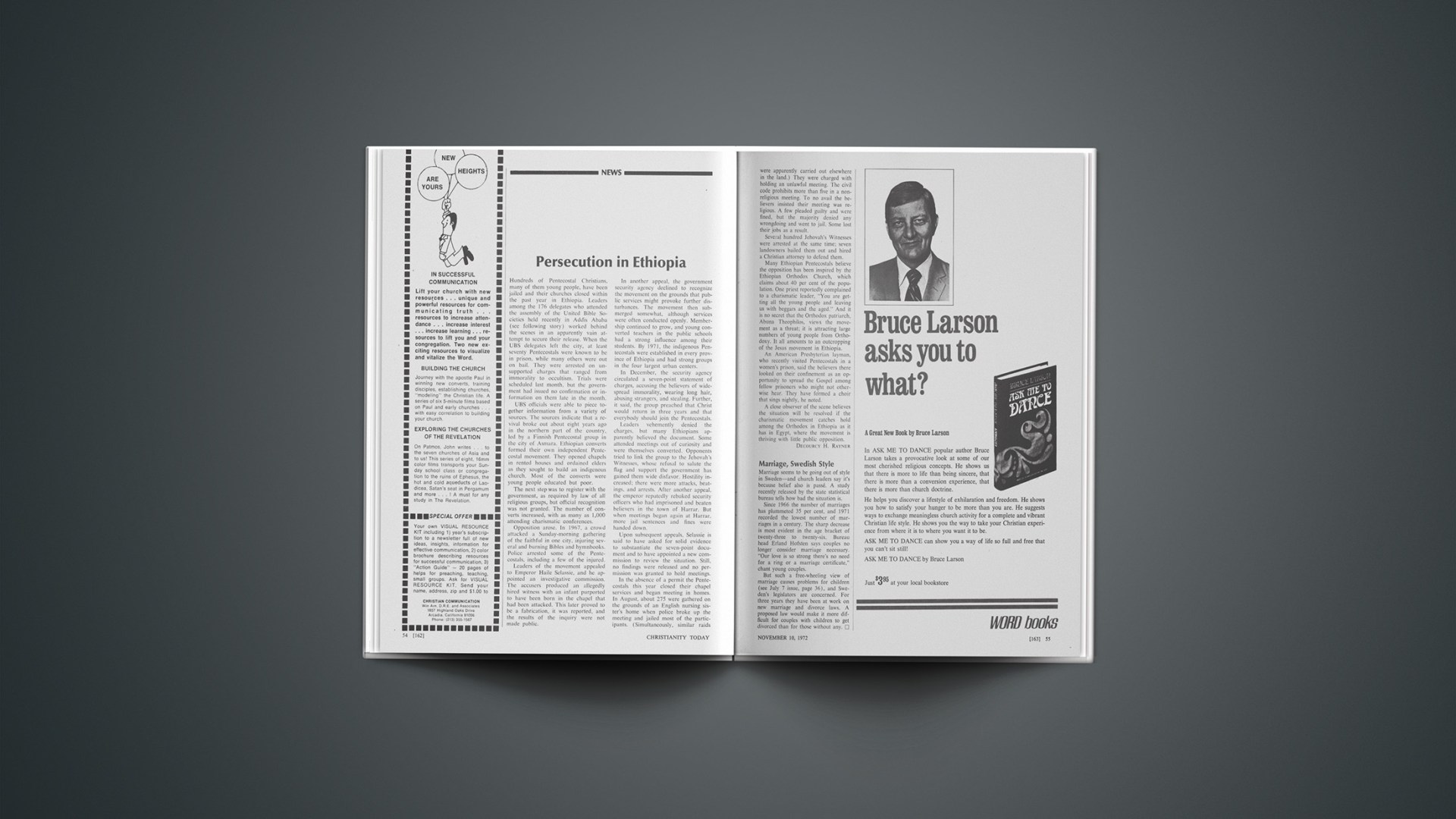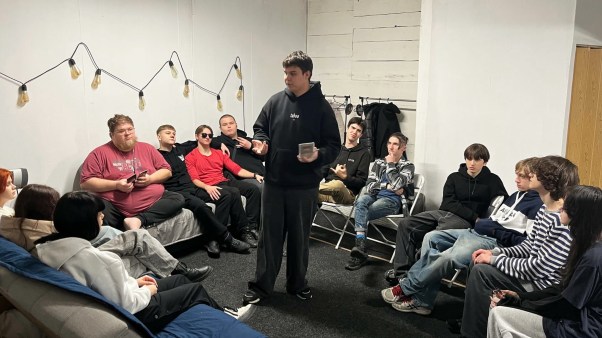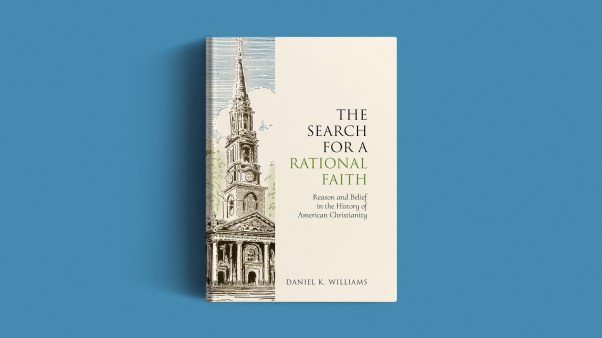Many churches and mission boards, some with a tradition of church-state separation, may not care to admit it, but they are getting money from government agencies in both Canada and the United States to help fund overseas programs. There are strings attached: the church agencies must agree to use the money solely for development of needy countries and not for proselytism. It comes from the U. S. Agency for International Development (AID) and from the Canadian International Development Agency (CIDA).
Some groups—World Vision, Christian Children’s Fund, and Lutheran World Relief—collect from both governments by having both Canadian and U. S. offices. World Vision, for instance, gets more than $1.4 million from the Canadian government plus another $250,000 in ocean freight subsidies from Washington.
Both governments demand that the grants be given to specific overseas development programs. Both require accountability, involving reams of paper work.
An AID official said his agency tries to safeguard the independence of each mission and church organization. “They may get into trouble with their constituency if they’re too involved with government,” he said. “We respect that and would never consciously try to jeopardize that independence.”
In the 1970–71 fiscal year, CIDA helped twenty-one religious organizations, including eleven distinctively evangelical groups. Among the aided are Inter-Varsity Christian Fellowship ($30,000), The Evangelical Church ($50,000), Overseas Missionary Fellowship ($390,000), the Sudan Interior Mission ($615,000), and the Pentecostal Assemblies of Canada ($1,400,000). Many U. S. groups receive food under the PL480 plan (a public law superseding the Food for Peace plan), ocean freight subsidies, and surplus government property at home and abroad. Agencies getting aid last year included the American Mission to the Greeks ($4,000), Christian Children’s Fund ($158,000), Mennonite Central Committee ($270,000), World Relief Commission of the National Association of Evangelicals ($1.1 million), and World Vision ($260,000).
Most aid is for programs in health, education, and agriculture in developing nations, explained the AID source. Africa, he said, is the target of the most highly organized programs, but Asia receives more money “primarily because of the vast amount of aid sent to Bangladesh.” Once the food (mostly grains) and supplies arrive at the designated country, the volunteer organizations are completely responsible for them. “They arrange for shipment inland, distribution, and conversion of grains into foods. And we have a very rigorous body of rules to account for every ounce. We have all kinds of audits.” Each group must also prepare financial statements once a year showing how much is spent overseas, and how much goes into administration.
To qualify for the money, church agencies must agree to a non-proselytizing rule. The government cash and supplies must not be used in conjunction with preaching or conversion but strictly within the development program. Most groups, noted the AID man, seem to conform. “There’s a very clear demarcation between the proselytizing and the relief services.”
Among the strong church-state separatist groups is the Seventh-day Adventist Church. Nevertheless, in the 1971 report of AID’s Voluntary Agencies Division, the church is listed as receiving more than one million dollars’ worth of donated food under PL480 plus another $400,000 in subsidized shipment of the food to the designated countries. The church’s $1.7 million government assistance amounts to nearly 40 per cent of its $4.6 million overseas aid funds.
In addition to receiving government cash for specific programs, many of the church agencies are also often hired by the government to run projects the government conceived and sponsors. The NAE’s World Relief Commission received $14,000 under this system of government contract in 1970, while the Christian Children’s Fund earned $158,000.
Biggest AID recipients are the Catholic Relief Services ($83 million), Church World Service of the National Council of Churches ($11.2 million), and Lutheran World Relief ($5.1 million). In Canada, CIDA’s biggest handout went to the Canadian Council of Churches, which represents most of the major non-Catholic churches. It amounted to approximately $12 million. Other big recipients were the Christian Children’s Fund of Canada ($1 million), the Mennonite Central Committee ($1 million), the Pentecostal Assemblies of Canada ($1.4 million), and the Unitarian Service Committee of Canada ($1 million).
Most agencies also seek private contributions in addition to the AID and CIDA grants. While AID gives $200 million annually to non-governmental private agencies, about $325 million (including $200 million for Israel from American Jews) is raised in the private sector through fund-raising appeals, direct mail, and advertising. (CIDA gives approximately $9 million while another $35 million is raised privately.) Ostensibly, with such government help, more of the private donations can be used to pay staff salaries, purchase expensive headquarters equipment, and maintain modern office facilities.
Government aid is not limited to overseas work. In Canada, CIDA and other government bodies help with domestic programs too. In the United States, churches and home mission boards can receive financial aid through ACTION (the combined Peace Corps and Vista programs), the Office of Economic Opportunity, and the Department of Labor’s JOBS program. Again, aid is given only to designated non-proselytizing programs.
Few groups are willing to publicize the government handouts, mostly because of fears that church-state separatists may stop giving.
Private volunteer agencies—partially subsidized by government money—may soon be the major vehicle of American foreign aid. Government-sponsored aid projects are being curtailed in many countries as their capacity for self-development increases. Churches and church-related bodies, however, are still able to enter most countries with development programs. As a result, AID is planning to expand its grant program to private agencies. Churches and para-church agencies are among the groups most likely to receive the cash.










